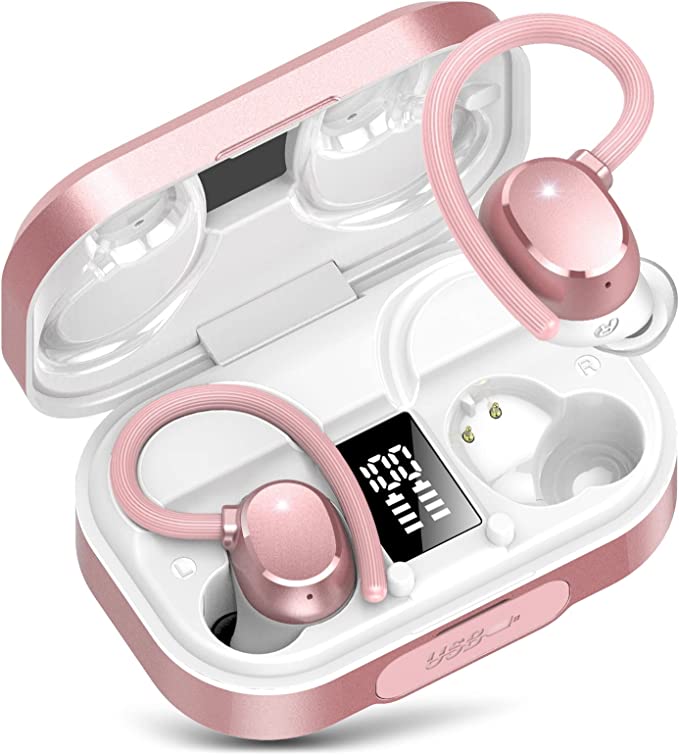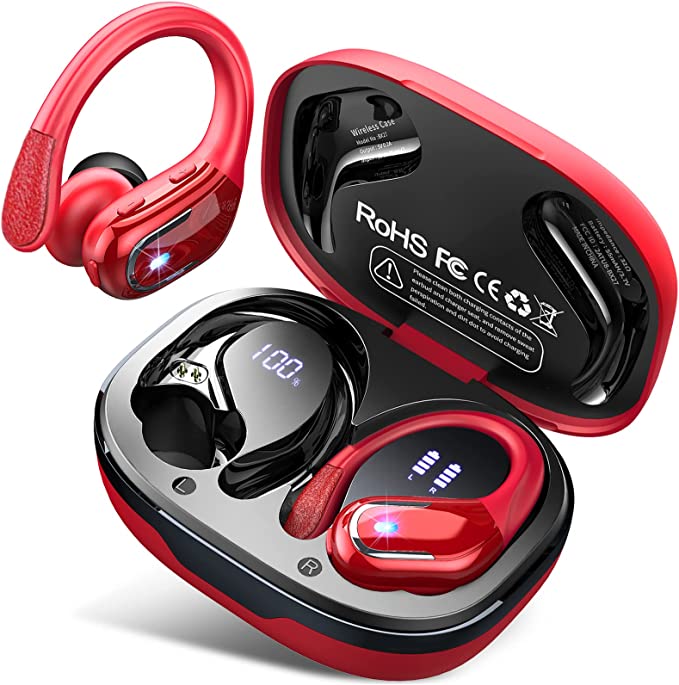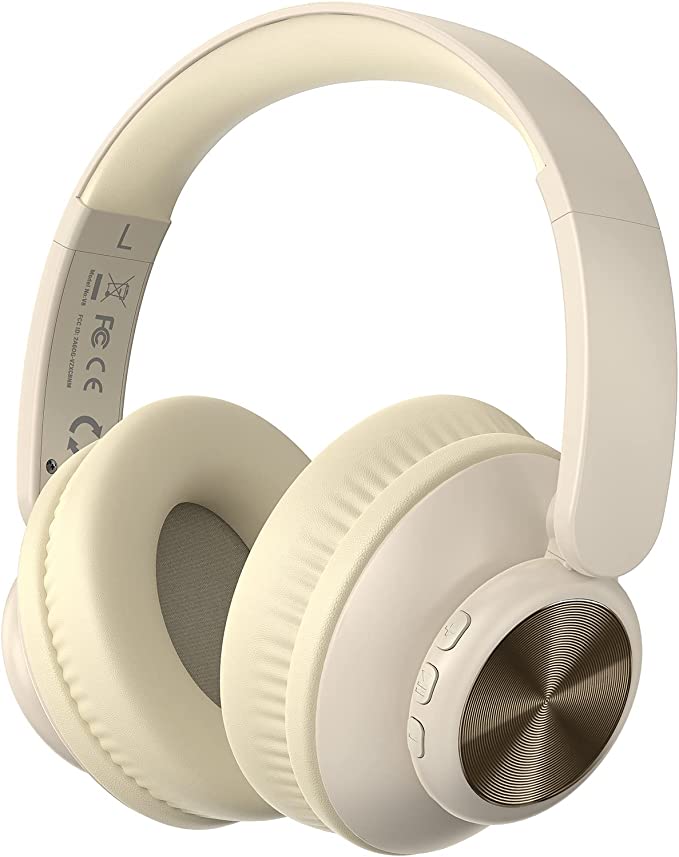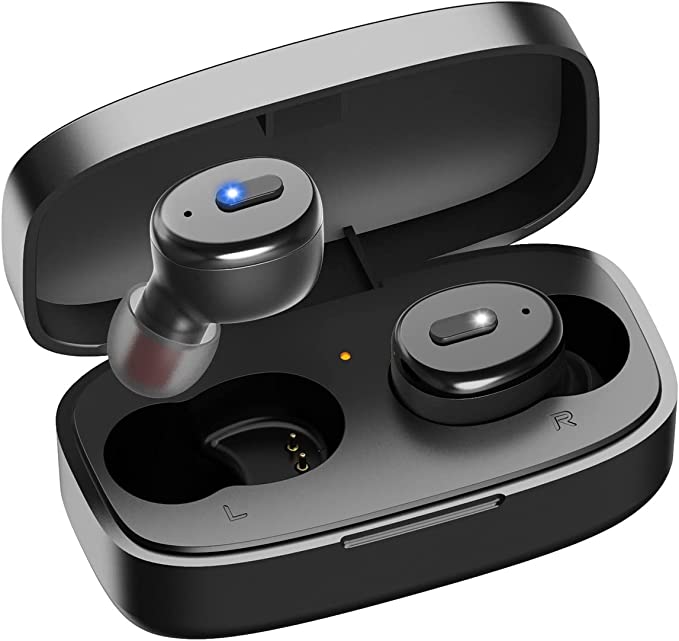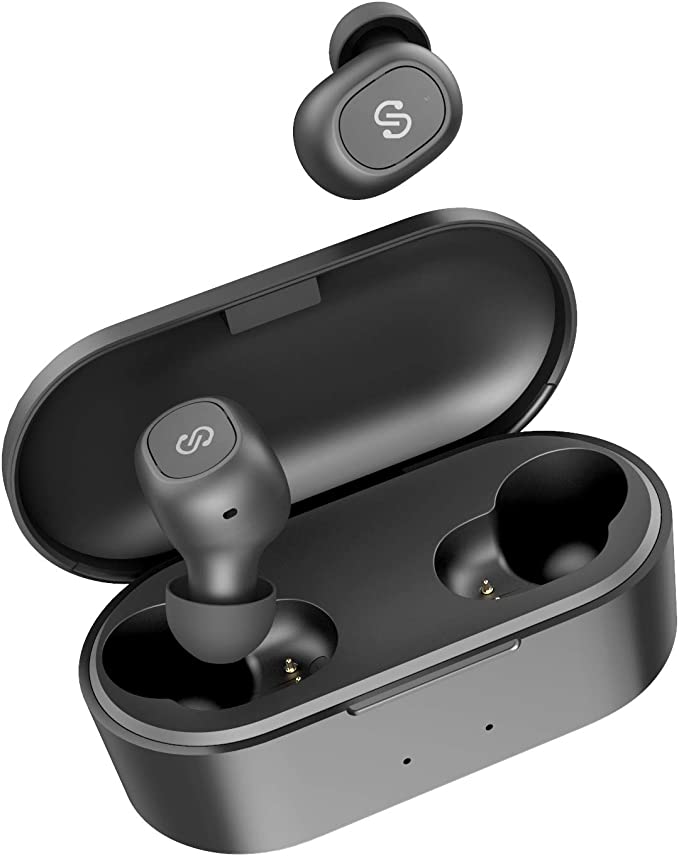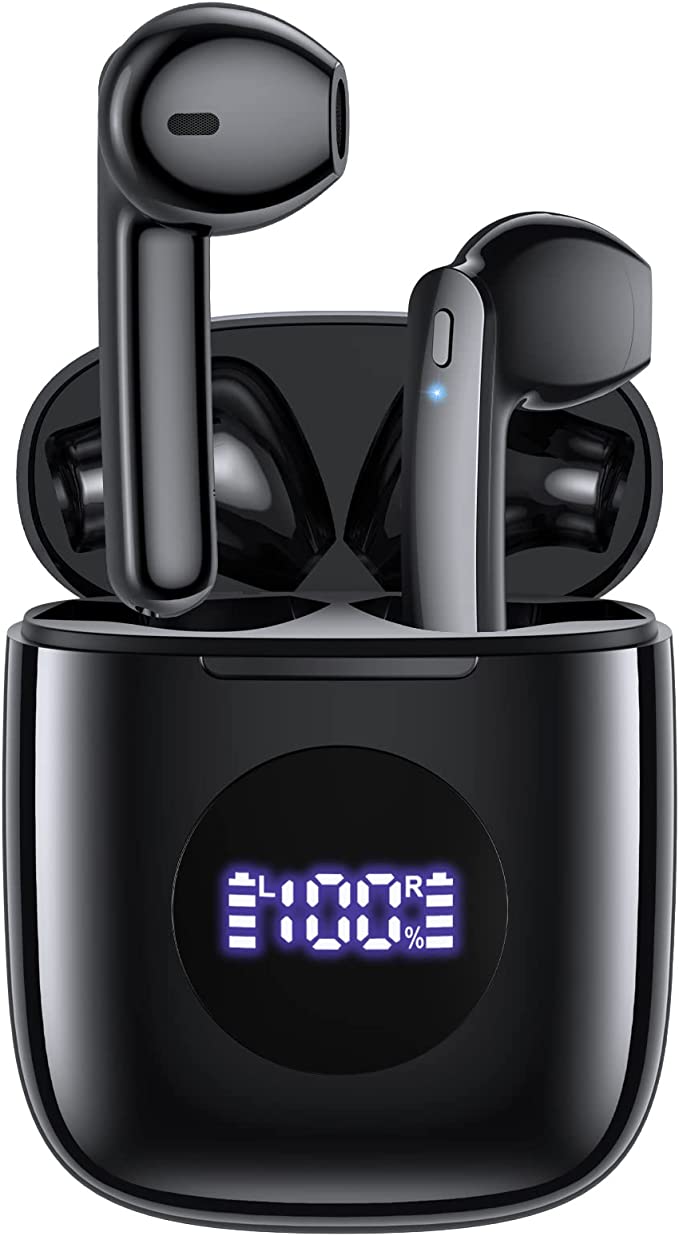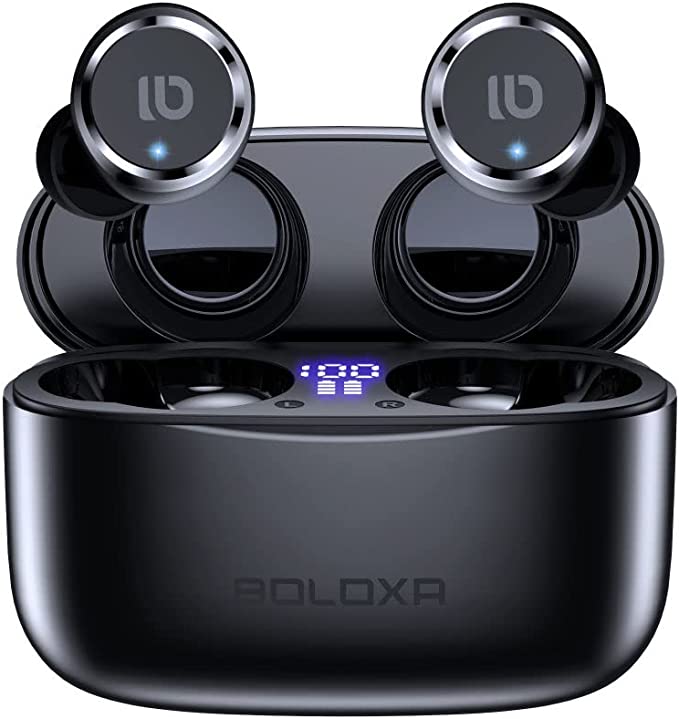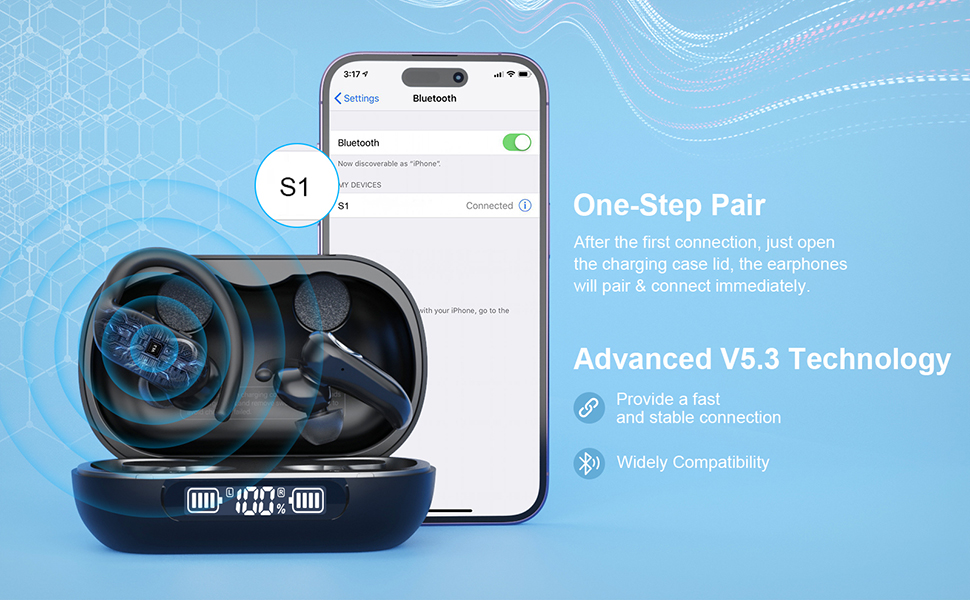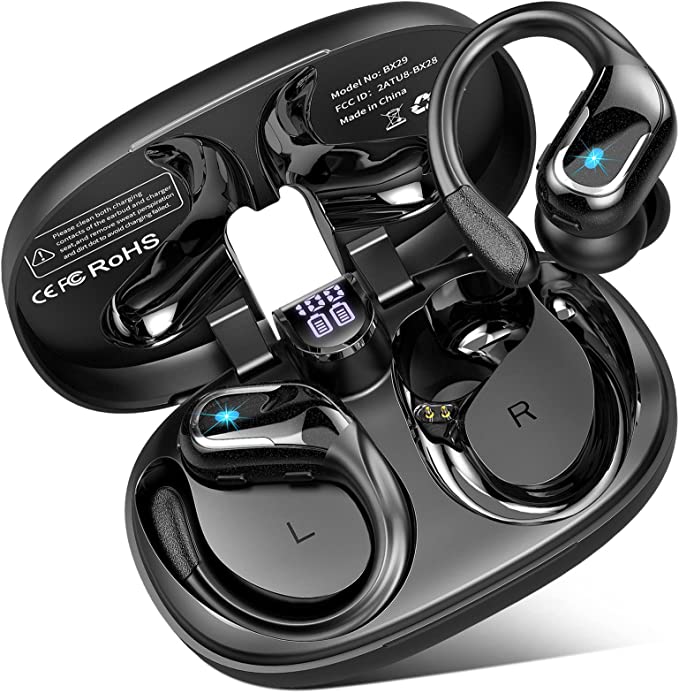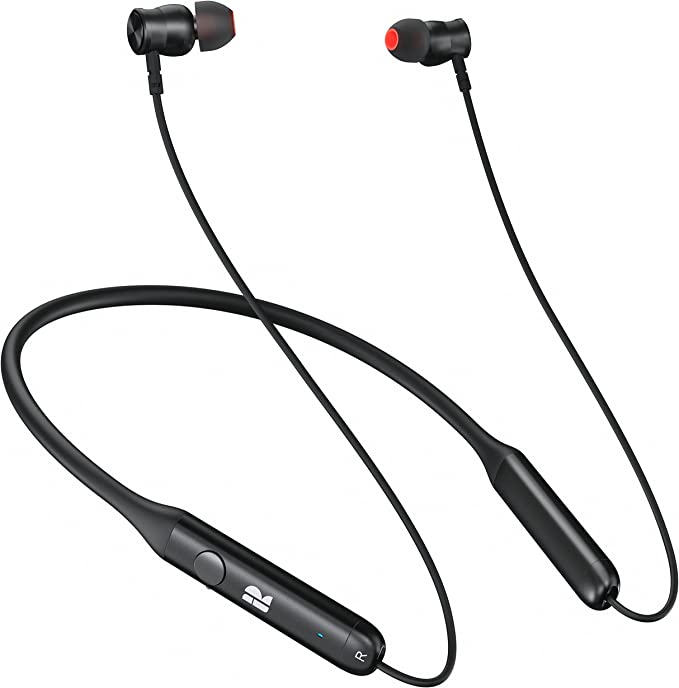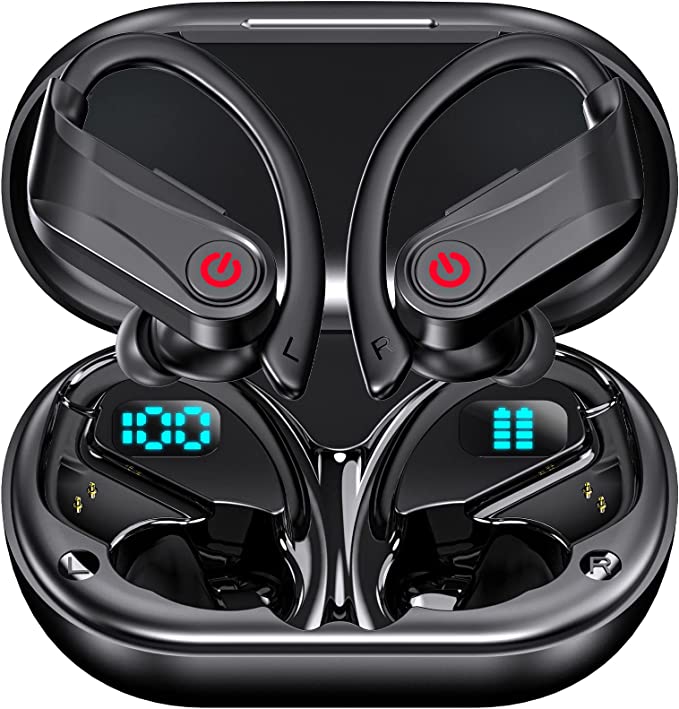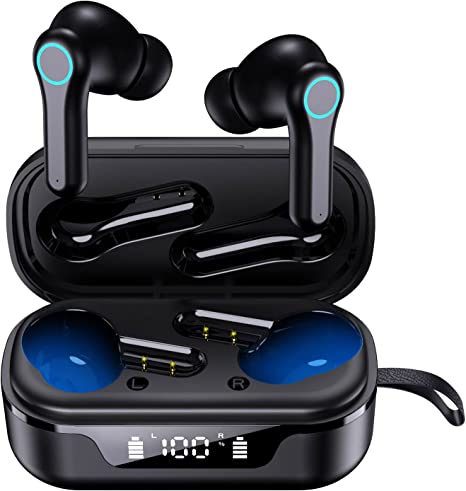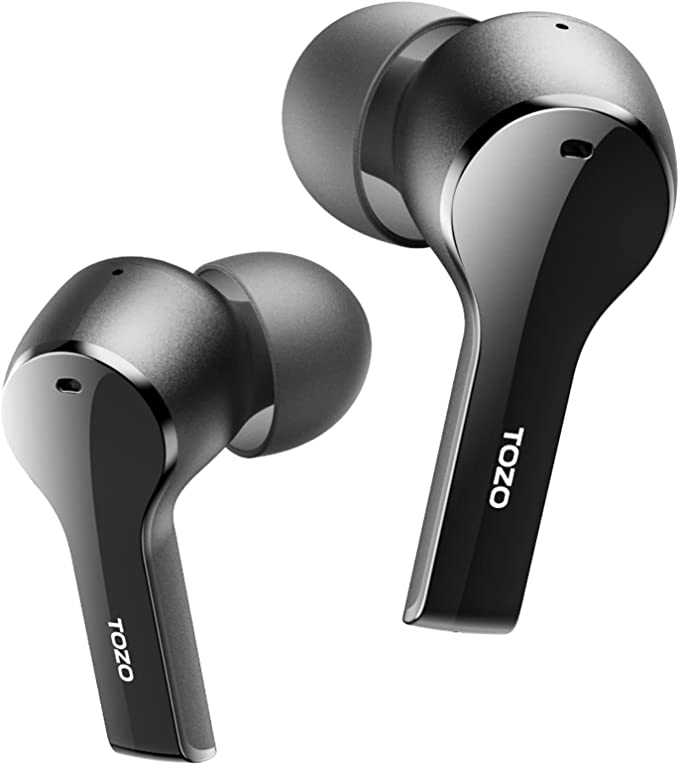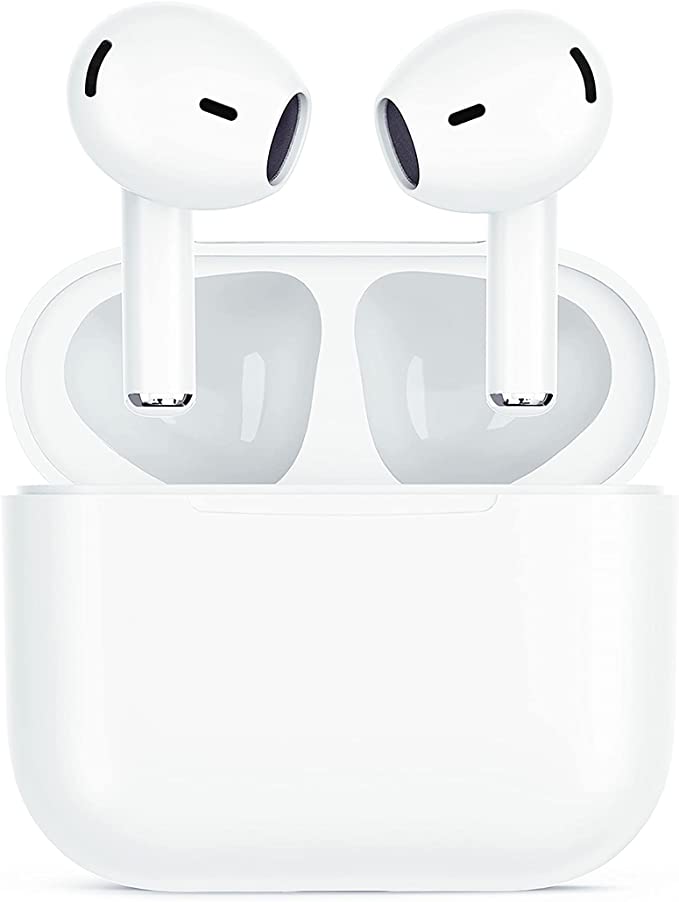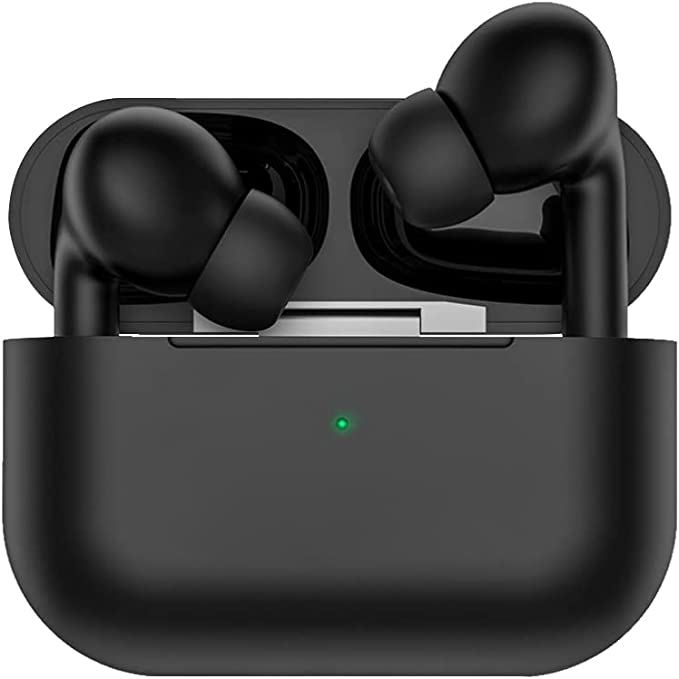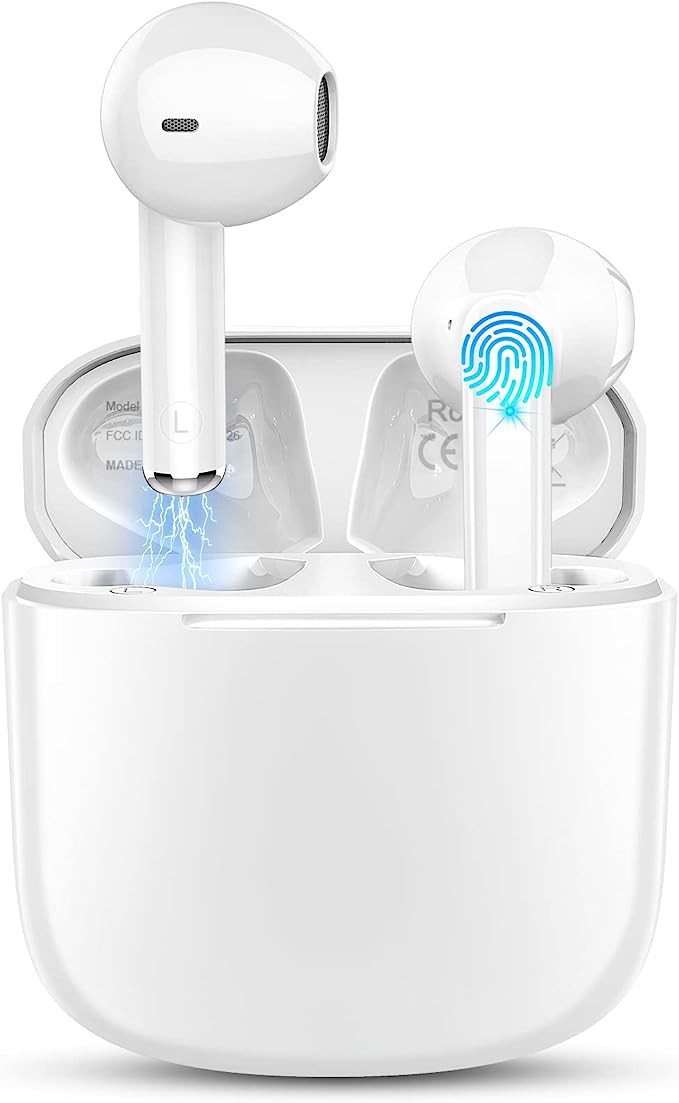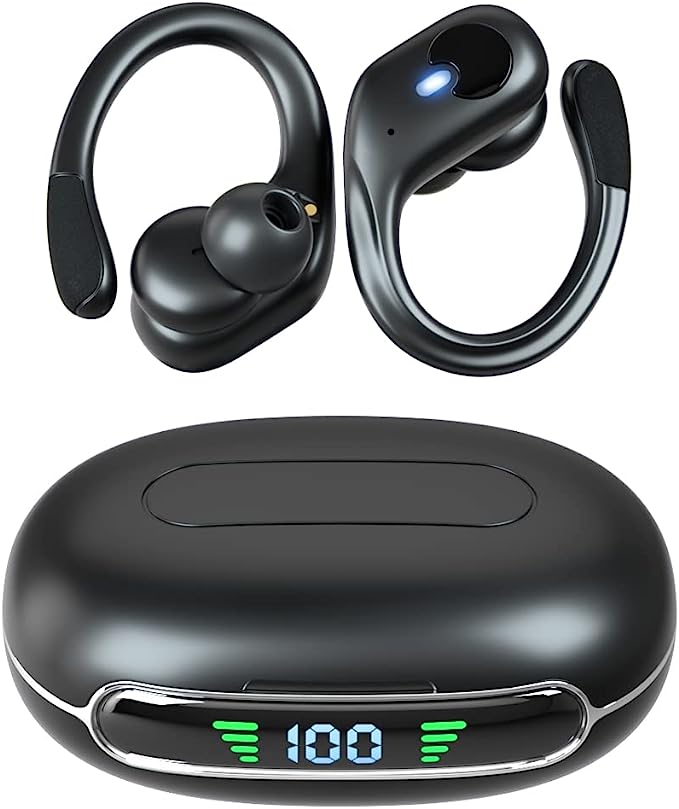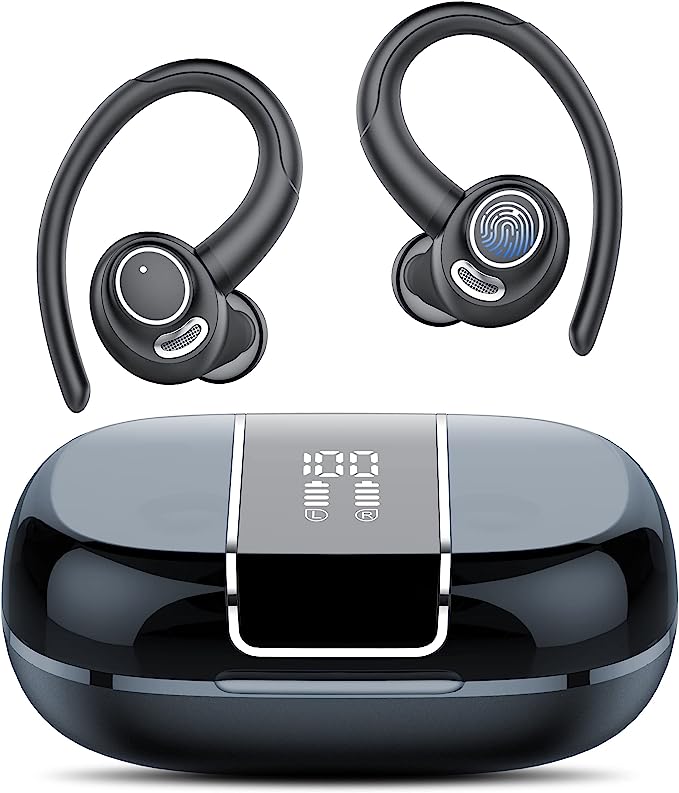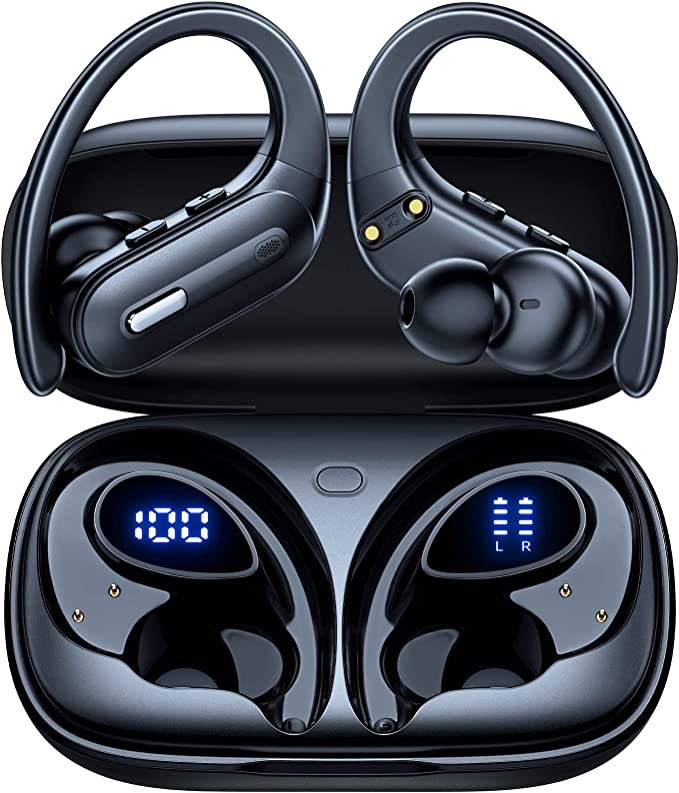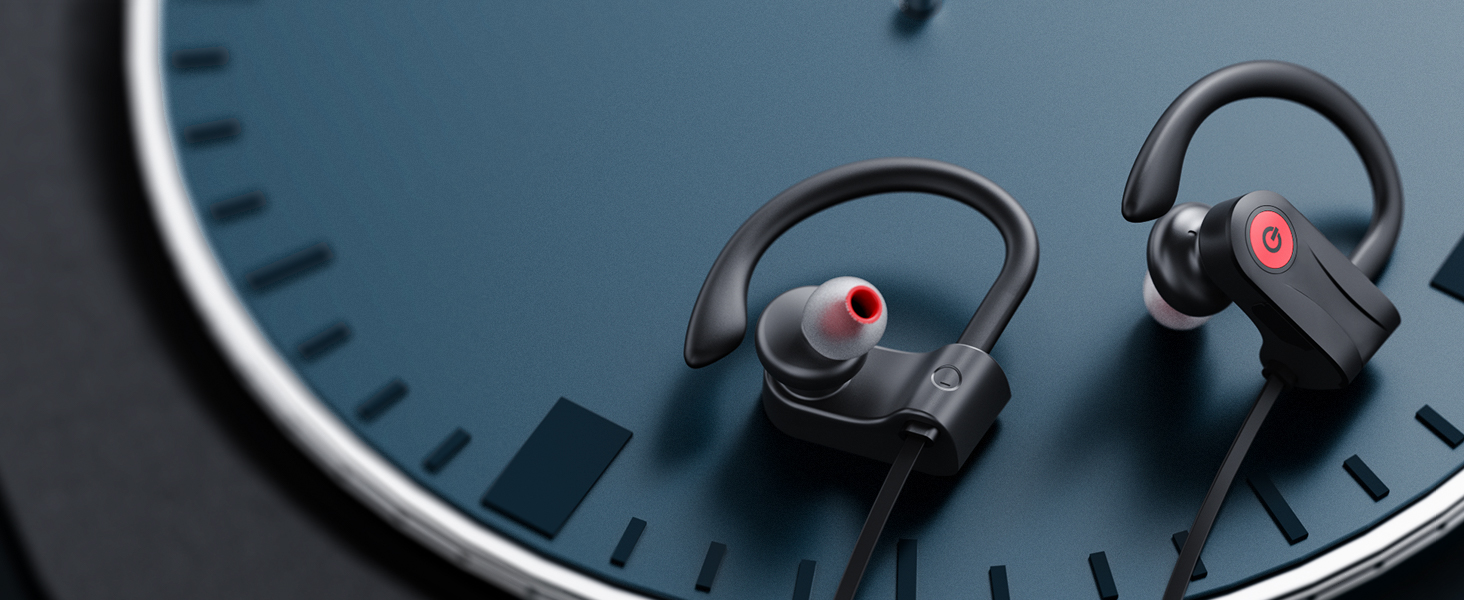JOYWISE N6 Bluetooth Headphones: The Science of 52-Hour Playtime, Rapid Charging, and All-Weather Audio
Update on May 15, 2025, 4:23 a.m.
In our hyper-connected, constantly moving world, personal audio isn’t just a luxury; it’s an essential thread in the fabric of our daily lives. Whether it’s the thumping beat that powers our morning run, the focused calm of a podcast during a bustling commute, or the crystal-clear voice on a crucial conference call, we demand a seamless, uninterrupted soundtrack. Yet, the quest for wireless earbuds that deliver on all fronts – marathon-like endurance, rock-solid connectivity, resilience against the elements, and genuinely satisfying sound – without an exorbitant price tag can often feel like chasing a mirage. Today, however, we’re going to delve into a contender that promises just that: the JOYWISE N6 Bluetooth Headphones. My name is Dr. Evelyn Hayes, and as an audio technology enthusiast, I’m excited to peel back the layers and explore the fascinating science and thoughtful engineering that power this intriguing device.

The Heart of Endurance: Unpacking 52 Hours of Power and the Magic of Rapid Rejuvenation
One of the first specifications of the JOYWISE N6 that leaps out is its impressive 52-hour playtime (claimed by the manufacturer at 60% volume). Let’s pause and consider that: for someone listening for a couple of hours daily, that’s potentially weeks of use on a single charge. Imagine a full week of commutes, gym sessions, and evening relaxation, all without once reaching for the charging cable. This isn’t just a number; it’s a statement about freedom – freedom from the dreaded “low battery” anxiety that plagues so many of our essential gadgets.
But how is such longevity achieved in a relatively compact neckband design? The unsung hero here is the modern Lithium-Ion (Li-ion) battery. Over the past few decades, Li-ion technology has revolutionized portable electronics due to its high energy density. This means it can store a significant amount of energy in a small and lightweight package. The specific chemistry and internal design of the battery cells used in the N6, coupled with power-efficient components, are key. Furthermore, the N6 operates on Bluetooth 5.3, a version of the wireless standard that itself boasts significant improvements in power efficiency, particularly its Low Energy (LE) profile, which sips power rather than gulps it during periods of lower data transmission or standby. The manufacturer also notes a standby time of 200 hours, indicating that the internal circuitry is adept at minimizing power drain when the headphones are not actively streaming audio.
Equally impressive is the N6’s rapid rejuvenation capability via its USB-C port. According to JOYWISE, a full charge takes approximately one hour. But it’s the quick charge feature that truly shines for those on the go: just 10 minutes of charging can yield a remarkable 11 hours (or 660 minutes) of playtime. This is attributed to what the product information refers to as a “3C charging rate.” In battery terminology, ‘C-rate’ refers to the rate at which a battery is charged or discharged relative to its maximum capacity. A 1C rate means the battery is charged from empty to full in one hour. A 3C rate, therefore, implies a significantly faster charge, delivering three times the current of a 1C charge.
This isn’t just about brute force, however. Safely delivering such high currents requires a sophisticated Battery Management System (BMS). This embedded electronic system acts as the battery’s brain, constantly monitoring its voltage, current, and temperature. During fast charging, the BMS carefully regulates the power flow to prevent overheating or other conditions that could degrade the battery’s long-term health or pose a safety risk. It’s a delicate dance of physics and intelligent control, ensuring that your N6 not only charges quickly but also maintains its battery integrity over time. For the North American user juggling a demanding schedule, this means a forgotten charge before heading out for a run or a long flight is no longer a crisis, but a minor inconvenience quickly rectified.

Weaving the Wireless Web: The Nuances of Bluetooth 5.3 Connectivity
The invisible link between your audio source and the JOYWISE N6 is Bluetooth 5.3. This isn’t just an incremental update to an old standard; Bluetooth has undergone a significant evolution since its inception in the late 1990s, (conceived by Dr. Jaap Haartsen at Ericsson in Sweden), initially envisioned as a way to replace cables between mobile phones and their accessories. Version 5.3, released by the Bluetooth Special Interest Group (SIG), brings tangible benefits to the audio experience.
When a product claims its Bluetooth is “faster and more stable,” what does that truly mean for the N6 user? Bluetooth 5.3 introduces several under-the-hood improvements. It features enhanced periodic advertising and connection updating, which allow devices to communicate more efficiently and establish connections more quickly, reducing latency – that annoying delay between, say, a video playing on your screen and the audio reaching your ears. It also incorporates better channel classification, enabling the device to more intelligently identify and avoid congested or noisy radio channels, leading to a more robust and interference-resistant connection. This is particularly valuable in environments saturated with other wireless signals, like busy offices or public transport. While the N6 specifications don’t explicitly detail support for all advanced Bluetooth 5.3 features like LE Audio (which promises new audio codecs like LC3 and capabilities like Auracast™ broadcast audio), the foundational improvements in version 5.3 contribute to a more reliable and power-efficient link for standard audio streaming.
A particularly noteworthy feature, highlighted in one of the product’s customer reviews, is its ability to “dual connect” or maintain simultaneous connections to two devices. This is typically achieved through Bluetooth multipoint technology. Imagine you’re watching a training video on your laptop, and your smartphone, also connected to the N6, rings. With multipoint, the N6 can intelligently pause the laptop audio and switch to the phone call. Once the call ends, it can seamlessly resume your video. This is a massive productivity and convenience boon for today’s multitaskers, eliminating the fiddly process of manually disconnecting and reconnecting between devices. It’s a small feature with a big impact on daily workflow.
The overall user impact of Bluetooth 5.3 in the N6 is a more fluid and dependable audio experience. Fewer dropouts during your morning jog, clearer conversations without a physical tether, and the subtle but significant benefit of your headphone’s battery (and your phone’s) lasting just that little bit longer.

Braving the Elements and the Everyday: IPX7 Resilience and Ergonomic Intelligence
For many, headphones are companions in adventure, whether that’s a sweaty gym session, a run in unpredictable weather, or just navigating the daily urban jungle. The JOYWISE N6 addresses this with an IPX7 waterproof rating. To demystify this, “IP” stands for Ingress Protection, a standard defined by the International Electrotechnical Commission (IEC). The first digit (replaced by ‘X’ here) refers to protection against solid particles (like dust), and ‘X’ means it hasn’t been specifically tested or rated for this. The second digit, ‘7’ in this case, refers to liquid ingress protection. An IPX7 rating signifies that the device is protected against the effects of temporary immersion in water under standardized conditions: up to 1 meter (about 3.3 feet) of fresh water for up to 30 minutes.
How is this achieved? Engineers employ a combination of strategies. This includes precisely fitted seals and gaskets around casing joints and entry points (like the charging port, often covered by a snug flap, though USB-C itself can be made water-resistant). Internal components might also be treated with hydrophobic (water-repelling) nano-coatings, adding an extra layer of defense. This IPX7 rating means the N6 should comfortably handle profuse sweating and being caught in the rain. However, it’s crucial to understand its limitations: it’s not designed for swimming (prolonged submersion, water pressure, and pool chemicals can exceed its limits) or for protection against high-pressure water jets. Think of it as a reliable raincoat, not a deep-sea diving suit.
Beyond elemental protection, the N6’s physical design emphasizes ergonomic intelligence. The neckband form factor itself offers several advantages for active users. It allows for larger batteries than true wireless earbuds and distributes the weight (the product description mentions a “featherlight” 35g for the neckband in one section, while product information lists an item weight of 3.2 ounces or ~90.7g for the whole package; focusing on the neckband itself, 35g would indeed be very light) comfortably around the neck, reducing the likelihood of earbuds being dislodged during vigorous movement. The product also mentions “bars that can balance the weight,” suggesting a design that aims to prevent one side from feeling heavier or pulling.
A simple yet profoundly useful feature is the magnetic design of the earbuds. When not in use, they can be clasped together around your neck, preventing them from tangling or getting lost. This relies on small, powerful neodymium magnets embedded within the earbud housings. It’s a small touch that enhances everyday usability, making it quick to pause your audio and secure the headphones.
Finally, achieving a good fit is paramount for both comfort and sound quality. The N6 comes with three sizes (S/M/L) of silicone ear caps and three sizes of ear wings. The ear caps create a seal in the ear canal, crucial for good bass response and passive noise isolation. The ear wings, designed to sit against the inner concha of the outer ear, provide an additional anchor point, enhancing stability, especially during activities like running or gym workouts. This customizable approach acknowledges that a “one-size-fits-all” rarely does when it comes to in-ear comfort and security.

The Auditory Experience: Crafting Balanced Sound with the N6
At the end of the day, headphones live or die by their sound. The JOYWISE N6 promises an “excellent sound quality,” characterized by “balanced bass and clear treble” thanks to “upgraded acoustic components” for a “rich, high-fidelity sound experience.” While these are common marketing phrases, what might they mean from a technical perspective?
Most earbuds in this category, including likely the N6, use dynamic drivers. A dynamic driver is essentially a miniature loudspeaker, comprising a diaphragm (a thin membrane), a voice coil attached to it, and a magnet. When an electrical audio signal passes through the voice coil, it creates a fluctuating magnetic field that interacts with the permanent magnet, causing the diaphragm to vibrate rapidly, which in turn creates the sound waves we hear. The material and design of the diaphragm, the strength of the magnet, and the precise engineering of the voice coil and acoustic enclosure all play critical roles in shaping the sound.

The term “balanced sound” typically implies a frequency response that doesn’t overly emphasize any particular part of the audio spectrum. This means bass frequencies should be present and impactful but not boomy or muddy, midrange frequencies (where vocals and many instruments reside) should be clear and natural, and treble frequencies should be crisp and detailed without sounding harsh or sibilant. “Upgraded acoustic components” could refer to improvements in any of these elements – perhaps a more responsive diaphragm material or a more carefully tuned acoustic chamber.
The importance of a good acoustic seal, as facilitated by the various ear tip sizes, cannot be overstated. A proper seal prevents sound leakage (especially bass frequencies) and helps in passive noise isolation – physically blocking out some ambient noise. This is distinct from Active Noise Cancellation (ANC), which uses microphones and electronics to counteract external noise. The N6 has a user rating of 3.9/5 for “Noise cancellation,” suggesting a decent level of passive isolation from its in-ear design, which can significantly enhance the immersiveness of the listening experience without the added battery drain or cost of ANC.
For the North American listener, this focus on balanced sound means the N6 aims to be a versatile performer, whether you’re enjoying intricate jazz, bass-heavy electronic music, dialogue-rich podcasts, or taking important calls.

The Symphony of Science in Your Ears
The JOYWISE N6 Bluetooth Headphones, when we look beyond the surface, are a fascinating example of how multiple streams of scientific and engineering disciplines converge to create a device that seamlessly integrates into our lives. From the electrochemistry within its long-lasting battery and the physics of its rapid charging, to the radio frequency engineering of Bluetooth 5.3 ensuring stable connections and the material science behind its IPX7 resilience; from the ergonomic considerations of its neckband design to the acoustic principles governing its sound reproduction – it’s a symphony of carefully orchestrated technologies.

While any product at an accessible price point will involve design trade-offs, the N6 appears to prioritize features that resonate strongly with active and mobile users: exceptional battery life, robust connectivity with welcome additions like dual-device support, practical durability, and a commitment to balanced audio.
As technology continues its relentless march, personal audio devices will undoubtedly become even more intelligent, more integrated, and more attuned to our individual needs. But for now, devices like the JOYWISE N6 demonstrate how a thoughtful application of current science can deliver a compelling and empowering audio experience, allowing us to carry our soundtrack, our connections, and our focus with us, wherever life may lead.
